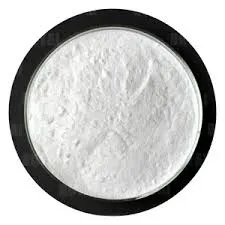
Nov . 22, 2024 22:41 Back to list
chemical structure of hpmc
The Chemical Structure of HPMC An In-Depth Exploration
Hydroxypropyl Methylcellulose (HPMC) is a cellulose derivative extensively used in various industries, including pharmaceuticals, food, and construction. Its unique chemical structure endows it with distinctive properties, making it a versatile ingredient in many applications. Understanding the chemical structure of HPMC provides insight into its functionalities and advantages.
Composition and Structure
HPMC is a modified form of cellulose, which is a natural polymer consisting of glucose units linked by β-1,4-glycosidic bonds. The modification process involves etherification, wherein hydroxyl groups of the cellulose backbone are substituted with hydroxypropyl and methyl groups. This chemical alteration results in a compound with distinct solubility, viscosity, and film-forming properties.
The molecular structure of HPMC can be broken down into three key components the cellulose backbone, methyl groups, and hydroxypropyl groups. The cellulose backbone remains intact, providing structural integrity; however, the introduction of the hydrophobic methyl groups and hydrophilic hydroxypropyl groups alters its solubility profile.
Degrees of Substitution
The properties of HPMC can vary significantly based on the degree of substitution (DS), which indicates the average number of substituent groups per glucose unit in the cellulose chain. Commonly, HPMC is categorized by its DS values low, medium, and high.
1. Methyl Substitution The extent of methyl substitution influences the hydrophilicity of HPMC. A higher methyl substitution level generally increases its hydrophobic nature, making it less soluble in water but enhancing its thickening and gelling capabilities when mixed with other substances.
2. Hydroxypropyl Substitution On the other hand, hydroxypropyl groups boost the solubility of HPMC. The presence of these groups allows HPMC to dissolve in cold water, forming a clear gel, which is particularly advantageous in pharmaceutical formulations and food products.
Properties of HPMC
The chemical structure of HPMC endows it with several critical properties
chemical structure of hpmc

- Thickening Agent Due to its capacity to increase viscosity, HPMC is commonly used as a thickening agent in various formulations. This thickening ability is a result of the intertwined molecular chains that create a network in solution, slowing the flow of liquids.
- Emulsifier and Stabilizer HPMC serves as an emulsifying agent, preventing the separation of components in emulsions and suspensions. Its molecular structure allows it to interact with both hydrophilic and hydrophobic substances, making it effective in stabilizing mixtures.
- Controlled Release In pharmaceuticals, HPMC is often used as a controlled-release matrix in drug formulations. Its chemical structure allows for the modulation of drug release rates, enhancing the therapeutic effects while minimizing potential side effects.
- Film-Forming Agent HPMC can form films when applied to surfaces, which is useful in various applications, including coatings in the food industry and pharmaceuticals. The flexibility and transparency of the films created from HPMC make them suitable for protective coatings.
Applications in Industries
1. Pharmaceuticals HPMC plays a pivotal role in the formulation of tablets and capsules. Its ability to control drug release is vital in enhancing bioavailability and ensuring a consistent therapeutic effect.
2. Food Industry As a food additive, HPMC is utilized for its thickening and emulsifying properties in sauces, dairy products, and baked goods, contributing to texture and stability.
3. Construction HPMC is also employed in construction materials, such as adhesives and mortars, where it enhances water retention and workability.
Conclusion
The chemical structure of HPMC, characterized by its cellulose backbone and the strategic substitution of methyl and hydroxypropyl groups, results in a multifunctional compound with numerous industrial applications. Its unique properties, including thickening, emulsifying, and film-forming abilities, position HPMC as an essential ingredient in pharmaceuticals, food technology, and construction. The continued research into its structure-activity relationship promises further innovations within these fields, highlighting the importance of HPMC in modern applications. As industries evolve, HPMC remains a critical component, exemplifying the marriage of natural polymers with chemical modifications to meet contemporary demands.
-
Versatile Hpmc Uses in Different Industries
NewsJun.19,2025
-
Redispersible Powder's Role in Enhancing Durability of Construction Products
NewsJun.19,2025
-
Hydroxyethyl Cellulose Applications Driving Green Industrial Processes
NewsJun.19,2025
-
Exploring Different Redispersible Polymer Powder
NewsJun.19,2025
-
Choosing the Right Mortar Bonding Agent
NewsJun.19,2025
-
Applications and Significance of China Hpmc in Modern Industries
NewsJun.19,2025







